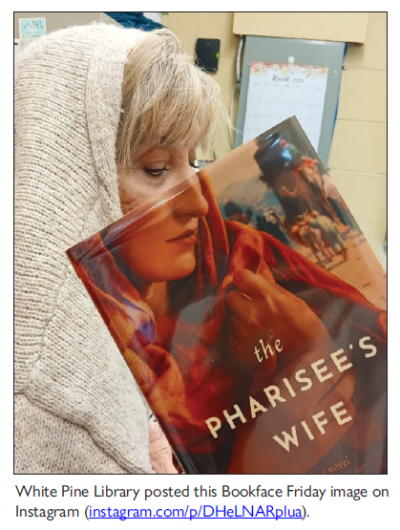|
MARKETING LIBRARY SERVICES
Why and How to Promote Your Collections
by Kathy Dempsey
| Put those messages where the audience already is - donít make them come to the library website or building to see them. |
By and large, you could say that most active library promotional campaigns are about events and observances: author visits, Summer Reading programs, Library Card Sign-Up Month, adult technology classes, open houses, National Library Week, etc. And there certainly is a lot going on that you want your community to know about, no matter what type of library you work in.
However, if you focus on events and instruction, you overlook one of the biggest things librarians should be shouting about: their collections of books, periodicals, research databases, and multimedia holdings. It’s easy to assume that “everybody knows libraries are for books and learning,” but that doesn’t mean people have any idea of the depth and breadth of collections, let alone how those items can help improve their lives. So, how can you tell them, and how can technology play a part?
Start With the Basics: Books
If there’s one thing that everyone does know about libraries, it’s that they’re full of books. Studies have proven that. People who are big readers are already drawn to libraries, but others could use some help realizing that the collection has something for them too. That’s why you need to go beyond featuring the latest bestsellers on your website. Think about what non-users might be surprised and delighted with. Do you have an interesting cultural cookbook collection? How about how-to or For Dummies books? Do you have local history or archives that nobody else does? (I remember working in libraries that housed shelves upon shelves of printed telephone books so people could find businesses in other major cities.)
There are myriad ways to promote books. Some public libraries put a changing slideshow, or carousel, of new book covers on their homepages. Some participate in social media trends such as posting photos for Bookface Fridays or #TBT (Throwback Thursday) to show off classics. If you happen to have space for a column in your campus, corporate, or township newsletter, you could write about a different book genre in each installation. Video is an eye-catching medium in which you can share short book reviews or share humorous skits. And for years, public and academic staffers have worked with local influencers to create READ posters that show people with their favorite titles. (Place some posters outside your building so nonusers will spot them.) 
Promoting Invisible Resources
Books are easy to show off because they are, in most cases, physical items. Even when books are in digital or audio format, there are covers you can display. But things get a little trickier when you need to promote invisible resources such as research databases, homework-help availability, online health tools, and the like.
To tell our community that we have useful digital tools, we tend to want visible representations we can use. Many databases have logos, but those icons and product names aren’t familiar to laypeople. Besides, you don’t want to promote the items you have; you want to tout the benefits people will get from using them. Therefore, instead of saying, “You can use LexisNexis for free at the library” (because what the heck is a “LexisNexis”?), you should say, “There are free business tools at the library to support entrepreneurs.” To accompany messages like this, you can use stock photos (or take your own) of related items: laptops, tablets, businesspeople, etc. (Make sure your library’s branding is on everything.)
Another way to make resources visible is to create signage. Some database vendors offer downloadable posters that highlight a product and leave space for a library to add info or branding. Some library systems purchase large banners they can take to off-site events.
Testimonials are a very powerful tool for promoting the value of library usage. It’s simple to make 30-second cellphone videos that show users talking about the goodness they’ve found in library collections. Once you have a short clip of a student touting your online homework help or a parent gushing over the early learning resources and colorful keyboards in the children’s area, you can post it on your social media, send links via email, add it to a collection on a YouTube channel, or share it in meetings with potential users or partners. Encourage the people who star in your videos to share them personally too.
Don’t Forget These Guidelines
While you’re busy telling everyone what your library has for them, don’t forget two important points. First, target your messages as much as you can. If your email list can be segmented into groups (traditional and nontraditional students, faculty members, parents of young children, businesspeople, senior citizens, etc.), then you’re in great shape for sending specific messages only to the people they apply to. If your ILS or add-on platform can’t segment your mailing list, enabling that would be a worthwhile goal for 2026. In general, put those messages where the audience already is—don’t make them come to the library website or building to see them.
Second, make sure you tell people how to use what you’re promoting. Have links pointing to landing pages that tell recipients how to get library cards, how to log in to databases from home, how to place holds, and what they can enjoy even without a card. This information is so routine to us that it’s easy to forget that others don’t know it. This is the time to put on your friendliest, most helpful hat to ensure that your messages are welcoming and your instructions are clear.
In short, you can help increase your library’s circulation, online usage, and registration numbers simply by strategically telling potential users that you have unexpected items that can support their needs. So while you’re marketing events and special observances, don’t forget to promote your core collections as well. |